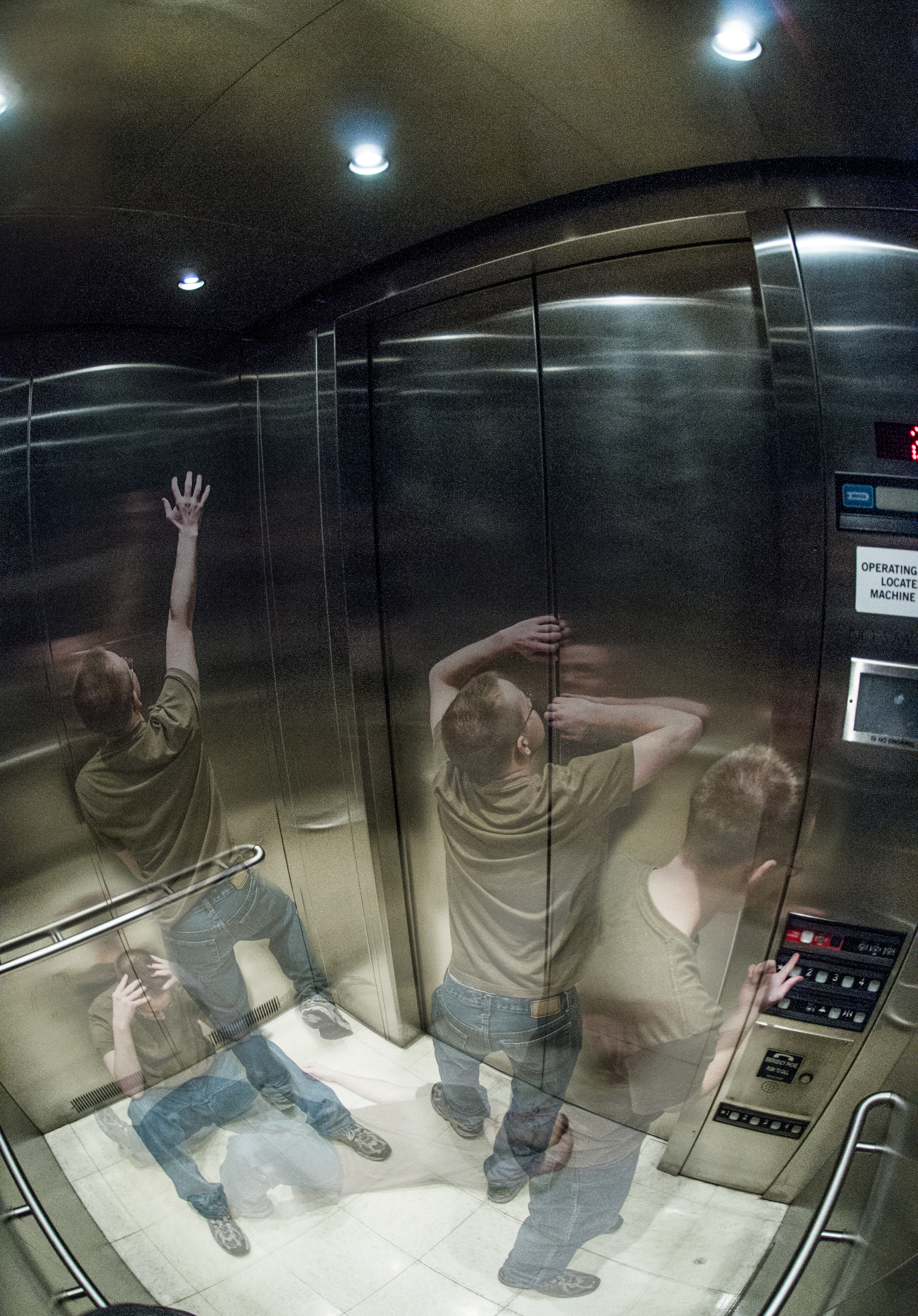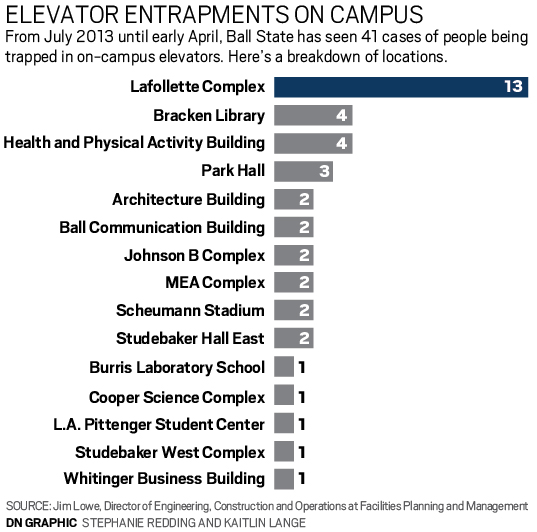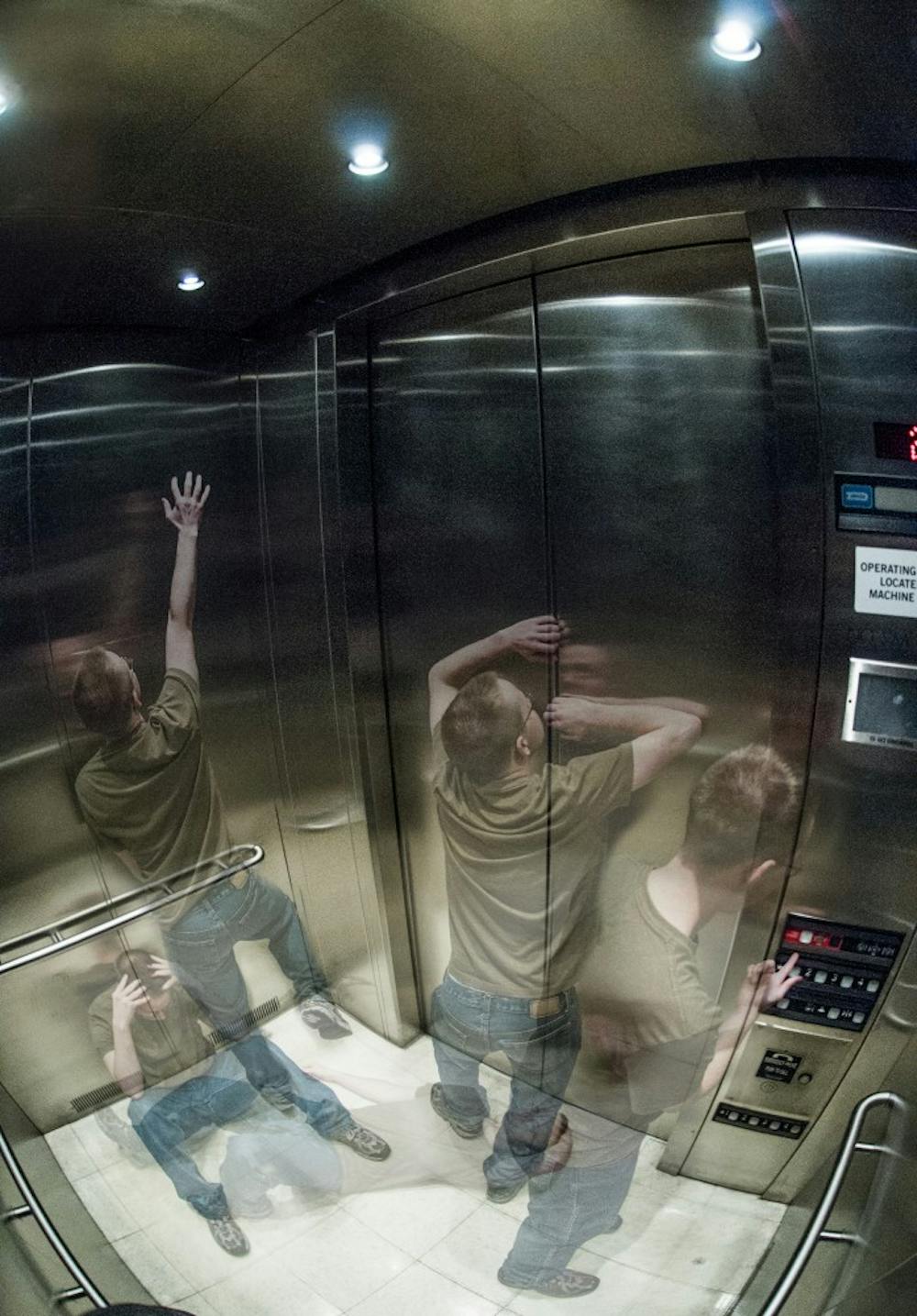Since July 2013 on campus, there have been 41 cases of people being trapped in an elevator.
All of these cases were in 25 percent of the 108 elevators on campus, said Jim Lowe, director of engineering and construction operations. He said elevators often stop service before a major mechanical failure.

Photo Illustration Jonathan Miksanek |
• Since July, 41 cases of people being stuck in elevators have occurred on campus.
• One students was trapped in a LaFollette Complex elevator for three hours.
• An elevator mechanic that works with Ball State said the breakdowns are normal.
Since July 2013 on campus, there have been 41 cases of people being trapped in an elevator.
All of these cases were in 25 percent of the 108 elevators on campus, said Jim Lowe, director of engineering and construction operations. He said elevators often stop service before a major mechanical failure.
Nikaya Hale, a freshman international business major, was traveling down to the first floor of Knotts and Edwards halls in LaFollette Complex with two of her friends when the elevator stopped moving.
Once the fire department arrived, they discovered they were stuck on the third floor — the LaFollette Complex residence hall elevators have stops on floors one and six only. Hale and her friends ended up having to wait three hours for elevator service workers to arrive and move the elevator to an exit.
Hale said she wasn’t scared because she was with her friends, but one of the other women was worried about being in the enclosed space.
“We pay so much money to live in dorms,” Hale said. “It’s one thing that the elevators only go from the first to sixth floor, but they break down all of the time. If we’re paying this much money and you can’t even get the elevator to go to every floor, you can at least get it to work.”
Thirteen of the cases since July 2013 happened in LaFollette Complex’s 17 elevators.
Elizabeth Kreipe, a sophomore speech pathology major, got stuck Tuesday in a North Quad elevator.
She called her friend in the building to see if she could open the door from the outside, but was not successful.
“While she was on the way over there, the elevator kind of jolted a little bit, so I started freaking out,” Kreipe said. “You see all of those movies, and I was like, ‘OK I’m going to die.’”
Kreipe said she hit the call button and was told help was on the way.
Meanwhile, she said she was freaking out, getting hot and started crying.
Eventually, the elevator opened.
When elevators break down, occupants can use the phones inside to call public safety officers, who then call the Muncie Fire Department. The fire department helps remove people from the elevator, if public safety officers can’t.
MFD does not charge Ball State for this service.
The university could not provide numbers for the amount of elevator breakdowns that do not include entrapment.
Joe Snyder, a mechanic at Murphy Elevator, said the elevators don’t break down more than he expected for a campus of about 18,000 students.
“[They break down] probably not anymore than they should for what they get used,” Snyder said. “They get used 24-7.”
Lowe said the university chooses to upgrade elevators in residence halls and other academic buildings based on condition. Typically, elevators are upgraded when buildings are renovated, but he said he tries to set aside money every year for elevator upgrades.
A single elevator can cost up to $300,000 to replace, Lowe said.
The most recently upgrades were in the Teachers College, which received renovation over the past two years.
Lowe said Indiana requires annual state inspections of elevators.
He said LaFollette Complex’s elevators, which began running in the late ’60s, are the oldest on campus. Ten elevators in the complex will be upgraded during the summer, in addition to three Bracken Library elevators.






